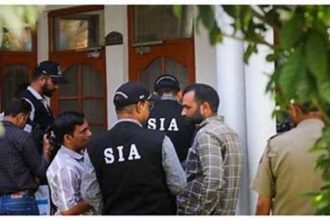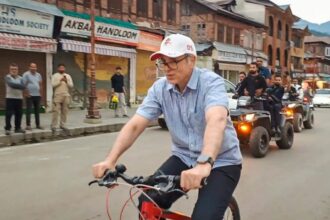A Political Renaissance: From Separatism to Integration
The political landscape of Jammu and Kashmir is undergoing a seismic shift as eleven organizations formally sever ties with the separatist Hurriyat Conference, choosing instead to align with India’s constitutional framework. This historic decision, announced by Union Home Minister Amit Shah during his three-day visit to the region, marks a decisive turn toward unity and democratic participation. The latest groups to dissociate—Jammu Kashmir Islamic Political Party, Jammu and Kashmir Muslim Democratic League, and Kashmir Freedom Front—join eight others that have exited the Hurriyat since March 2024. This exodus reflects a growing consensus among regional leaders and citizens that divisive politics must yield to dialogue, development and national integration. Shah hailed the move as a ‘Victory for Democracy,’ emphasizing that it underscores the people’s faith in Prime Minister Narendra Modi’s vision of a prosperous and united Kashmir.
The Catalyst for Change: Modi’s Vision and Grassroots Development
The Modi government’s focus on Grassroots Empowerment and Economic Revitalization has laid the foundation for this transformation. Since the abrogation of Article 370 in 2019, initiatives like the Back to Village Programme—which allocated ₹353 crore for rural infrastructure—have connected administrators directly with villagers, addressing grievances and accelerating development. Industrial incentives, skill-building programs, and infrastructure projects have created jobs and instilled hope among youth, who now prioritize education and entrepreneurship over conflict. The success of schemes like the Free Bus Service for Women—used by 3.5 lakh passengers in a week—demonstrates how inclusive policies empower marginalized groups, further cementing trust in democratic institutions.
Voices of Transformation: Leaders and Citizens Speak
Local leaders and citizens alike are embracing this new direction. A member of the Jammu and Kashmir Muslim Democratic League stated, “This is not just a political decision; it’s a moral one. We want our youth to have futures beyond conflict.” College students in Srinagar echo this sentiment, with one remarking, “We’re tired of being pawns in political games. This shift gives us hope for education and jobs.” Women, too, are benefiting: the free bus service has enabled students like Aisha from Anantnag to commute safely to college, while entrepreneurs like Rubina use the service to expand their handicraft businesses. These stories symbolize a broader societal shift toward opportunity and dignity.
The Road Ahead: Building a Prosperous Future
The government aims to sustain this momentum through accelerated development, inclusive dialogue, and enhanced security. Key priorities include expanding highways, hospitals and digital connectivity to remote areas, fostering political engagement with mainstream parties, and neutralizing terror networks to ensure safety. Projects like the Sagam Tulip Garden—a new agro-tourism hotspot—and solar-powered microgrids in villages highlight Kashmir’s potential as a hub for sustainable tourism and green energy. By integrating the region into national supply chains for saffron, handicrafts and horticulture, policymakers aim to create a self-reliant economy that empowers local communities.
A Cultural Rebirth: Beyond Politics
This political shift is part of a larger Cultural Renaissance sweeping Kashmir. The once-dominant narrative of conflict is being replaced by stories of resilience and renewal. Farmers in Pulwama are adopting drip irrigation to save apple orchards, women in Bandipora are leading self-help groups, and artists in Srinagar are reviving traditional crafts like papier-mâché. The decline of the Hurriyat’s influence mirrors this change, as citizens reject divisive ideologies in favor of unity and progress. Even the landscape reflects this transformation: the vibrant yellow mustard fields of Awantipora and the tulip gardens of Sagam now draw tourists seeking beauty and peace, replacing images of strife with those of hope.
A Unified Kashmir, A Beacon of Hope
Jammu and Kashmir’s journey from conflict to constitution is a testament to the power of inclusive governance and the indomitable spirit of its people. As Amit Shah declared, “The era of stone-pelting has ended; the era of startups has begun.” With eleven groups now championing India’s democratic ethos, the region stands poised to become a model of peace and progress. From the bustling bus stops of Srinagar to the serene villages of Kupwara, Kashmir is writing a new story—one defined not by division, but by unity, opportunity and the unwavering belief that a brighter tomorrow is possible.







